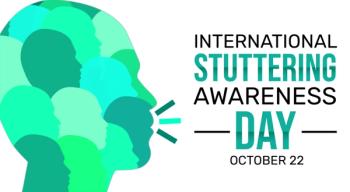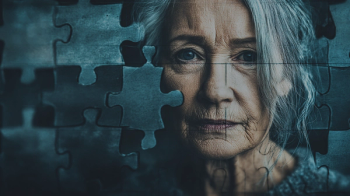
Locked-In Syndrome: Advances in Communication Spur Rehabilitation
On December 8, 1995, Jean-Dominique Baubyshaved, dressed, drank a cup of hot chocolate,and spent the day conducting business as theeditor-in-chief of Elle magazine. By the end ofthat day, 43-year-old Bauby was in a coma,the result of a massive brain stem stroke.
On December 8, 1995, Jean-Dominique Baubyshaved, dressed, drank a cup of hot chocolate,and spent the day conducting business as theeditor-in-chief of Elle magazine. By the end ofthat day, 43-year-old Bauby was in a coma,the result of a massive brain stem stroke.
One month later, Bauby had passed through several weeks of grogginess to become fully conscious--but was unable to speak or move. He had become a victim of locked-in syndrome (LIS). Once a powerful figure in the communications business, Bauby found himself unable to even signal for the attention of an attending nurse.
Chances are you've heard this story. But the reason you've heard it is because, in spite of it all, Bauby did find a way to communicate. Although it was a painstakingly slow process in which he would blink his left eyelid to choose letters from an alphabet board, Bauby spelled out his new life in the 132-page book The Diving Bell and the Butterfly, which was published shortly before his death in March 1997.1 Paradoxically, a method of communication--albeit rudimentary--was what persons in the medical community and around the world needed to appreciate the thoughts and feelings surging behind the silence and stillness of those who are locked in.
Physicians have learned from Bauby and other locked-in patients that the inability to communicate is far more frightening and debilitating than the inability to move. As a result, rehabilitation strategies for patients with LIS have focused on finding ways to facilitate communication using whatever means are available to a particular patient--whether blinking an eye, twitching a thumb, or even focusing one's thoughts to control a computer cursor with the help of a brain-computer interface (BCI). Clinicians believe that in the majority of cases, improved communication drastically improves patients' quality of life and allows them to be more actively involved with family and community. But some patients with LIS also have communicated feelings of frustration, depression, and even suicidality--thus sparking debate about what the quality of life for a locked-in patient really is and about the relative value of artificial ventilation and other expensive technologies used in sustaining their lives.
CLASSIFICATION
The incidence of LIS is difficult to determine from the medical literature, in large part because it is often misdiagnosed as coma, vegetative state, or minimally conscious state. Between 1997 and 2004, the French-based Association du Locked-In Syndrome (ALIS) registered 367 patients with LIS in its database,2 which has served as the basis for much of the research that has been done on this patient population. Some believe that the actual number of patients with LIS is much higher than that represented by the database.
"Probably every general neurologist has one of these cases in their practice," said Andrew J. Haig, MD, associate professor of physical medicine and rehabilitation at the University of Michigan. "It's not as uncommon as you'd think."
In 1979, Austrian researchers categorized LIS into 3 subtypes: classic LIS, in which conscious patients are immobile except for eye movement; incomplete LIS, in which minimal amounts of residual movement have been preserved in parts of the body beside the eyes; and total LIS, in which patients are conscious but unable to move any muscles at all.3
Although the Austrian terminology is used most often for classification of LIS, José Leon-Carrion, PhD, and colleagues at the University of Seville in 2002 suggested a different set of 3 subtypes: complete LIS, in which conscious patients may either be totally paralyzed or may have preserved eye movement as the result of a brain stem lesion; incomplete LIS, in which the patient may be able to perform other movements because of a partial recovery of the brain stem injury within a few weeks of LIS onset; and pseudo-LIS, in which the brain stem is secondarily affected by a primary cortical or cerebellar lesion.4
As Leon-Carrion's classification system suggests, the most frequent cause of LIS is thought to be injury to the basis pontis or ventral pontine region of the brain stem. In a review of cases published in 1986, James R. Patterson, MD, and Martin Grabois, MD, of Baylor College of Medicine found that injury to the area of the ventral pons was the cause of LIS in 82 of the 139 cases examined.5
The injury is most often vascular, a type cited in the literature as responsible for 52% to 100% of cases.2,5-9 In a recent analysis of 250 cases from the ALIS database, Steven Laureys, MD, PhD, a neurologist at the Cyclotron Research Centre and research associate for the Belgian Foundation for National Scientific Research in Liege, Belgium, found that 86% of patients had LIS of vascular origin.2 Brain stem lesions in LIS patients also may result from traumatic brain injury (TBI), which is cited as the cause in 9% to 31% of cases,5-9 or, infrequently, other causes ranging from brain tumor to prolonged hypoglycemia.2 Temporary LIS can be pharmacologically induced or stem from severe cases of peripheral polyneuropathy.10,11
Of note, a completely locked-in state also can occur in the end stages of amyotrophic lateral sclerosis (ALS),12 a situation that presents a very different set of patient care challenges than those associated with stroke or TBI. Because the degenerative progression of the disease can be predicted with some accuracy, ALS patients, their caregivers, and their physicians are able to prepare for the locked-in state and practice alternative means of communication before they are left with no other options. In this sense, they are spared some of the emotional trauma of stroke patients, for example, who may be in a locked-in state for weeks, months, or even years before a physician or (more often) a family member becomes aware that the patient is in fact fully conscious.9 However, ALS patients in a locked-in state have no hope of recovery; a patient who becomes locked in following a stroke or TBI is not likely to recover fully but at least can hope for small gains that could significantly improve quality of life.
COMMUNICATION
At its most basic level, communication for locked-in patients involves a simple yes-no system based on eye movements. Some may use a system in which 1 eye blink means "yes" and 2 blinks means "no"; others may look up for "yes" and look down for "no."
Low-tech methods also can be used, albeit slowly, for more detailed communication with any of several types of alphabet boards.13 Some alphabet boards have letters arranged in the order in which they are most frequently used in the patient's language (eg, in English, "E, T, A, O," etc) and require an assistant to go through the letters one by one until the patient blinks when the designated letter is reached. Other boards have letters arranged in 4 blocks: 1 for vowels and 3 alphabetically grouped blocks of consonants. The patient first blinks to designate a block, then uses the previously described method to designate a letter within the block. A third method arranges letters in a grid; the patient first blinks to designate the row in which a letter resides, then blinks to designate the column.
"Most people in their bedrooms, doing their basic activities of daily living, don't hook into a fancy communications system," Haig said. "Usually it's just basic eyes up and down or an AEIOU board. A lot of [communication] is done without any technology at all."
This type of "scanning" technique also can be applied to a computer system, in which patients use isolated muscle twitches--in a finger, for example--to activate a switch that moves a cursor on a computer screen. Although the computerization of the process makes the patient less dependent on another's assistance for communication, scanning techniques are still not particularly efficient. Faster communication can be facilitated through software that allows for "direct selection" of letters or phrases, either through the use of a laser pointer controlled by head movement or through the use of special infrared sensors that respond to eye movement, such that a patient can move a cursor or "select" a letter by staring at it and then "click" on it by blinking. The Quick Glance and Eyegaze infrared communications systems are 2 of the most popular.
The laser technique works best for patients who are able to move their heads, however minimally, said Susan K. Fager, MS, CCC-SLP, assistive technology coordinator and speech pathologist at Madonna Rehabilitation Hospital in Lincoln, Nebraska.
"If you move the laser-sensing surface far enough away from the person, then he or she can move the laser with just a little bit of head movement," Fager said. "If you do have some head movement, then it's difficult to use Eyegaze because your head moves with your eyes. For someone with a degenerative condition, the Eyegaze system is a better bet."
The future of communication technology for LIS patients, particularly those who are totally locked in, is the BCI. Niels Birbaumer, PhD, professor of medical psychology and behavioral neurobiology at the University of Tuebingen in Germany, has been the most vocal advocate of noninvasive BCI technology, which allows patients to select letters or move a cursor on a computer screen through the use of electroencephalography. The BCI developed by Birbaumer in 199914 uses electroencephalography to detect slow cortical potentials (SCPs), which patients are trained to produce in response to seeing a desired letter. Other electroencephalography-based BCIs have been designed to detect P300 waves15 or sensorimotor rhythms (SMR).16
In a comparison of the 3 types of systems in pre-locked-in patients with ALS, the SMR-BCI fared the best. The comparison, which was conducted as a joint effort between Birbaumer's group and researchers at Wadsworth Center in Albany, New York, examined the SMR-BCI, the P300-BCI, and the SCP-BCI. All of the patients using the SMR-BCI achieved at least a 70% rate of accuracy after 20 training sessions; 4 of the 7 patients testing the use of the P300-BCI achieved this same result, and none of the patients using the SCP-BCI were able to achieve an accuracy rate of 70% or more.17
Patients need longer training periods to achieve the same degree of success using an SCP-BCI, but this method may be the most stable of the noninvasive BCI options and the most applicable for the locked-in patient population, according to Birbaumer. Thus far, however, success with patients who were locked in before being introduced to a BCI system has been limited.
In the interest of promoting and advancing the technology, the Albany and Tuebingen researchers also have developed a general-purpose BCI platform, called BCI2000, that can be used for multiple applications18 and can be downloaded free for research or educational purposes from the group's Web site:
Theoretically, faster and more accurate communication ultimately may be achieved using more invasive BCI systems that can detect intracortical activity via implanted electrodes. A multi-institutional clinical trial is currently under way to assess the safety and effectiveness of the 96-electrode BrainGate BCI in 2 subsets of patients: those with spinal cord injury, brain stem stroke, or muscular dystrophy and those with ALS or other motor neuron diseases.
Of the first 4 patients, whose preliminary experiences were reported at the annual meeting of the Society for Neuroscience last October in Atlanta, 1 was 10 years removed from a brain stem stroke and had incomplete LIS (intact head and eye movement, occasional brief voluntary upper extremity movement) and another was a patient with ALS who was ventilator-dependent and only had limited head and eye movement.19,20 Both patients demonstrated the ability to use the BrainGate system to control a cursor and "click" on letters by imagin-ing movement of the hands; the patient with ALS was able to accomplish this on the first day of using the system, with no previous training.
"People who enroll in these early clinical trials are really pioneers," said Leigh R. Hochberg, MD, PhD, one of the trial's investigators, who presented the group's findings at the Society for Neuroscience meeting. "They aren't doing it because they're hoping to gain any personal benefit, but because they want to test the safety and feasibility of a device that will hopefully help other people with paralysis. I know that I'm grateful for the comments and guidance that we get from them."
To enroll a patient in the trial, contact Hochberg at
Although the study populations have been stratified because of concerns about motor cortex degeneration in the motor neuron disease group, Hochberg said the researchers are encouraged that all 4 patients were able to successfully use the system, despite the range of LIS causes.
"One thing we hope to learn is whether there are particular movements or particular strategies that are generalizable across patients in the study or that can be individualized for specific patients. This, I think, is a theme across BCI use," said Hochberg, a neurologist at Massaschusetts General Hospital and Brigham and Women's Hospital in Boston. "We all are trying to find the common rules that will make the various systems effective for as many patients as possible and find where can we gain additional value by customizing for each individual," he continued. Hochberg also is an associate investigator in the rehabilitation research and development service for the Department of Veterans Affairs and an investigator in neuroscience at Brown University in Providence, Rhode Island.
REHABILITATION
As communication skills have improved for patients with LIS, so has physicians' understanding of the locked-in experience, which in turn has changed the way the LIS patient population is managed. Physicians, other practitioners, and family members are encouraged to make a point of including patients in conversations rather than talking among themselves as if the patient were not in the same room--or worse, as if the patient cannot hear or understand what is being said.
"One of the biggest problems in the ALS population is that physicians stop communicating with the patients and they communicate instead with the family members, who don't necessarily understand the wishes of the patient," said Catherine Lomen-Hoerth, MD, assistant professor of neurology and director of the ALS Center at the University of California, San Francisco.
Of course, the slow rate at which patients with LIS communicate has to be balanced against practitioners' time limitations. Fager and the practitioners with whom she works have developed a series of yes-no questions for nurses to ask locked-in patients regarding issues the patient might have at the time, such as pain, room temperature, body positioning, or catheter problems.
"It's not realistic to ask a nurse to stand there for 20 minutes and have a complicated conversation, so we've developed this more basic communication system," she said. "We can usually narrow down the needs pretty well."
Patient communication also can facilitate more aggressive rehabilitation. Haig and colleagues followed a cohort of 29 patients with LIS for 11 years6,21,22 and found a 10-year survival rate of 83%. Of the 27 patients who were available for 5-year follow-up, 17 required tracheostomy and all required bowel programs following onset of LIS; 18 patients initially took no food by mouth and only 3 were able to urinate voluntarily with assistance. However, of the 18 patients who were alive after an additional 5 years (ie, at 10-year follow-up), only 3 still required tracheostomy, 10 took food orally, 7 urinated voluntarily with assistance, and 4 performed bowel functions voluntarily with assistance.
Of 95 patients from the ALIS database analyzed by Laureys and colleagues, 92% regained head movement to at least a moderate degree, 65% had small movements of the upper extremities, and 74% regained small movements of the lower extremities.2 Forty-four percent of patients from the ALIS database and 8 of 13 from Haig and colleagues' 11-year follow-up were being cared for at home.
"Medical recovery after the first year is very slow and very subtle, but it's not zero. For a person who has close to zero recovery, any little change can be a huge difference in quality of life," Haig said.
In their 11-year follow-up of 13 survivors,22 Haig and colleagues found that quality of life meant much more to these patients than control over bodily functions. One, an attorney, continued to provide legal opinions on difficult cases for his former firm. Another composes a children's story every week, then uses a computerized voice program to read the story to a local kindergarten class. A third was featured in a local newspaper, not because of his condition but because of his devotion to the Indiana University Hoosiers, and was photographed in his room surrounded by his collection of red and white flags, shirts, and posters.
Judy Mozersky suffered a brain stem stroke while attending a summer session at Cornell University in June 1990, the summer before her junior year, and lost all movement except that in her eyes. Using assistive computer technology, she has been able to continue her course work at Cornell and composed a memoir, Locked In: A Young Woman's Battle With Stroke, which was published in 1996 by the National Stroke Association.23 Joe Byczko, who became locked in after a brain stem stroke in 1997 at the age of 41, maintains a Web site (
FRUSTRATION
Despite the achievements of many persons with LIS, the life of a locked-in patient is full of frustration. The lack of independence, inability to perform activities that were previously routine, and exclusion from one's former social circles can wear on even those with the most positive of attitudes. Progress is made slowly, sometimes imperceptibly. Despite that many patients require constant assistance, they are often lonely.
Even the most skilled patient cannot have a conversation in real time. A group discussion may be over by the time the patient finishes spelling out a comment. Overeager conversation partners may incorrectly complete a word before the patient has finished spelling it: Bauby writes of a well-meaning person misunderstanding his attempt to ask for his glasses (lunettes, in French) as a statement about the moon (lune), while Mozersky tells of family members thinking she meant to spell "brain" when in fact she was trying to tell them that her braid was positioned uncomfortably behind her head. Sarcasm and humor are nearly impossible to communicate.
Physicians and researchers remain unclear as to just how these frustrations affect the mental health of patients with LIS. Nick Chisholm, an Australian who became locked in in July 2000 following a traumatic rugby accident, described his conflicting feelings in the July 2005 issue of British Medical Journal.24
"I'm just glad to be alive--most of the time, anyway," Chisholm wrote. "Sometimes I wish I had died in the ambulance on the way to the hospital. It would have been a lot less frustrating, for me anyway."
Research suggests that most LIS patients are generally in good mental health. Leon-Carrion and colleagues' 2002 survey of 44 patients from the ALIS database found that 47.5% described their mood as "good," whereas 5% described it as "bad" and 12.5% reported being depressed.9 Haig and colleagues reported that 7 of 13 LIS patients were satisfied with life in general while 5 were occasionally depressed,22 and 15 patients surveyed while attending the 2002 annual meeting of the ALIS in Paris did not demonstrate significantly lower SF-36 scores for mental health or general health than did age-matched controls.25 Three quarters of the patients in that survey reported that they rarely or never had suicidal thoughts.
It may be difficult to get a true sense of the feelings of a patient with LIS from surveys that are typically completed by a family member or caregiver who may not be aware of how the patient really feels because of difficulties in communicating about complex subjects, such as moods and suicidality. Some practitioners believe the actual number of patients with LIS who have considered suicide may be much lower than reported.
"Clinicians sometimes will look at a patient as a snapshot as opposed to a continuum," Haig said. "Many patients with many conditions will express a wish to die. Probably every spinal cord-injured patient I've ever treated said they wanted to die at some time, but when you spend time with them you realize that they don't want to die. You have to be very careful not to take one isolated statement as a true reflection of the patient's intentions."
CONTEMPLATION
Still, the published and anecdotal reports of the negative quality-of-life aspects of LIS raise the possibility that aggressive management of these patients--including expensive measures such as artificial ventilation--may not be in the best interest of patients or their families. This ethical question is particularly applicable to the patient with ALS, who will not recover from the locked-in state.
"It is indisputably good to reopen communication with a [totally locked-in] patient but before enthusiasm builds for the technology that makes it possible, the full implications of the ability to do so must be assessed," wrote Lawrence H. Phillips II, MD, a neurologist at the University of Virginia, in an editorial in the August 2006 issue of Neurology.26 "At a minimum, the [quality of life] of the patient and the full emotional, economic, and physical impact on caregivers should be assessed."
Many patients with ALS, however, spare their caregivers this ethical dilemma by making their wishes clear before their condition has degenerated to the point at which they cannot do so. Lomen-Hoerth says she has had only one patient with ALS who elected mechanical ventilation, and that patient expressly stated that he only wanted to remain ventilated until he could no longer control his eye movements; that request was honored by his family.
The more patients with LIS are able to communicate their wishes for themselves, the less physicians will struggle with the ethics of their care. This starts with recognizing the person who still lives inside every locked-in patient.
"When one of these people shows up in your hospital, you have to respect that this is a conscious human being who will be with you for a long while," Haig said. "You have to treat them as a long-standing patient, not as a case in the ICU."
REFERENCES1. Bauby J-D. The Diving Bell and the Butterfly. New York: AA Knopf; 1997.
2. Laureys S, Pellas F, Van Eeckhout P, et al. The locked-in syndrome: what is it like to be conscious but paralyzed and voiceless? Prog Brain Res. 2005;150:495-511.
3. Bauer G, Gerstenbrand F, Rumpl E. Varieties of the locked-in syndrome. J Neurol. 1979;221:77-91.
4. Leon-Carrion J, van Eeckhout P, Dominguez-Morales Mdel R. The locked-in syndrome: a syndrome looking for a therapy. Brain Inj. 2002;16: 555-569.
5. Patterson JR, Grabois M. Locked-in syndrome: a review of 139 cases. Stroke. 1986;17:758-764.
6. Katz RT, Haig AJ, Clark BB, DiPaola RJ. Long-term survival, prognosis, and life-care planning for 29 patients with chronic locked-in syndrome. Arch Phys Med Rehabil. 1992;73:403-408.
7. Richard I, Pereon Y, Guiheneu P, et al. Persistance of distal motor control in the locked in syndrome. Review of 11 patients. Paraplegia. 1995;33: 640-646.
8. Casanova E, Lazzari RE, Lotta S, Mazzucchi A. Locked-in syndrome: improvement in the prognosis after an early intensive multidisciplinary rehabilitation. Arch Phys Med Rehabil. 2003;84:862-867.
9. Leon-Carrion J, van Eeckhout P, Dominguez-Morales Mdel R, Perez-Santamaria FJ. The locked-in syndrome: a syndrome looking for a therapy. Brain Inj. 2002;16:571-582.
10. Sandin RH, Enlund G, Samuelsson P, Lennmarken C. Awareness during anaesthesia: a prospective case study. Lancet. 2000;355:707-711.
11. Ragazzoni A, Grippo A, Tozzi F, Zaccara G. Event-related potentials in patients with total locked-in state due to fulminant Guillain-Barre syndrome. Int J Psychophysiol. 2000;37:99-109.
12. Kotchoubey B, Lang S, Winter S, Birbaumer N. Cognitive processing in completely paralyzed patients with amyotrophic lateral sclerosis. Eur J Neurol. 2003;10:551-558.
13. van Eeckhout P. Le locked-in syndrom. Reeducation Orthophonique. 1997;35:123-135.
14. Birbaumer N. Slow cortical potentials: plasticity, operant control, and behavioral effects. Neuroscientist. 1999;5:74-78.
15. Farwell LA, Donchin E. Talking off the top of your head: toward a mental prosthesis utilizing event-related brain potentials. Electroencephalogr Clin Neurophysiol. 1988;70:510-523.
16. Wolpaw JR, McFarland DJ. Control of a two-dimensional movement signal by a noninvasive brain-computer interface in humans. Proc Natl Acad Sci U S A. 2004;101:17849-17854.
17. Birbaumer N. Breaking the silence: Brain-computer interfaces (BCI) for communication and motor control. Psychophysiology. 2006;43:517-532.
18. Schalk G, McFarland DJ, Hinterberger T, et al. BCI2000: a general-purpose brain-computer interface (BCI) system. IEEE Trans Biomed Eng. 2004;51: 1034-1043.
19. Hochberg LR, Friehs GM, Brown RH, et al. Voluntary modulation of motor cortical activity by a person with amyotrophic lateral sclerosis: initial BrainGate experience. Paper presented at: Neuroscience 2006; October 14-18, 2006; Atlanta.
20. Donoghue JP, Friehs GM, Caplan AH, et al. BrainGate neuromotor prosthesis: first experience by a person with brainstem stroke. Paper presented at: Neuroscience 2006; October 14-18, 2006; Atlanta.
21. Haig AJ, Katz RT, Sahgal V. Mortality and complications of the locked-in syndrome. Arch Phys Med Rehabil. 1987;68:24-27.
22. Doble JE, Haig AJ, Anderson C, Katz R. Impairment, activity, participation, life satisfaction and survival in persons with locked-in syndrome for over a decade: follow-up on a previously reported cohort. J Head Trauma Rehabil. 2003;18:435-444.
23. Mozersky J. Locked In: A Young Woman's Battle With Stroke. Washington, DC: National Stroke Association; 1996.
24. Chisholm N, Gillett G. The patient's journey: living with locked-in syndrome. BMJ. 2005;331: 94-97.
25. Ghorbel S. Statut fonctionnel et qualite de vie chez le locked-in syndrome a domicile. In: DEA Motricite Humaine et Handicap, Laboratory of Biostatistics, Epidemiology and Clinical Research. Montpelier, France: Universite Jean Monnet Saint- Etienne; 2002.
26. Phillips LH 2nd. Communicating with the "locked-in" patient: because you can do it, should you? Neurology. 2006;67:380-381.
Newsletter
Receive trusted psychiatric news, expert analysis, and clinical insights — subscribe today to support your practice and your patients.











